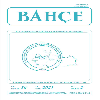FARKLI EKİM ZAMANI VE UÇ KESME UYGULAMASININ BRÜKSEL LAHANASINDA (Brassica olareceae L. var. gemmifera) VERİM ÜZERİNE ETKİSİ
Bu çalışmanın amacı, Marmara Bölgesinde Brüksel lahanası yetiştiriciliği için homojen ve sıkı baş oluşumunu teşvik eden ve makinalı hasada uygun uç kesme zamanının (UKZ) belirlenmesidir. gerçekleştirilen araştırmada iki Brüksel lahanası çeşidi (Oliver F? ve Maximus F?) kullanılmış ve uç kesme uygulamaları 3 farklı zamanda (1. UKZ: alttaki başlar 1 cm çapa ulaştığında, 2. UKZ: 1. hasattan sonra, 3. UKZ: 3. hasattan sonra) yapılmıştır. Kontrol olarak herhangi bir uygulama yapılmayan Brüksel lahanaları kullanılmıştır. Deneme iki yıl tekrarlanmış ve 4 farklı dönemde (15 Mayıs, 1 Haziran, 15 Haziran ve 1 Temmuz) tohum ekimi yapılmıştır. Elde edilen sonuçlara göre Oliver F? %60 daha verimli iken; Maximus F? sıcak dönemlere göre serin havalarda daha iyi bir performans göstermiştir. Ekim zamanları bakımından da çeşitler arasında farklılıklar olmakla beraber, erken ekimlerin daha verimli olduğu görülmektedir. Oliver F? çeşidinde 15 Mayıs ekim zamanı daha verimli olurken, Maximus F? çeşidinde 1 Haziran daha iyi sonuç vermiştir. Uç kesme zamanı olarak en iyi zamanın, alttaki başların 1 cm olduğunda yapılan, 1. UKZ tespit edilmiştir. Bu dönemde yapılan uç kesme, toplam verim ve erkenci verimi arttırıcı, dolayısıyla makinalı hasadı kolaylaştırıcı ve işçiliği azaltıcı bir uygulama olacaktır
THE EFFECT ON THE YIELD ON BRUSSEL SPROUTS (Brassica olareceae L. var. gemmifera) OF DIFFERENT SOWING DATES AND TOPPING TIME
The aim of this study is to determine the topping date (TD) which promotes a homogenous and tight head formation that appropriate to mechanical harvest, for the Brussels sprout cultivation in Marmara region. In this research which conducted in Atatürk Central Horticultural Research Station, two different Brussels sprouts variety (Oliver F₁ and Maximus F₁) was used, and the topping application was done three different date (TD1: when the bottom heads reached 1 cm diameter, TD2: After the first harvest date, TD3: After the third harvest date). The Brussels sprouts that any treatments have not been done were used as control. The experiments were repeated two years, and the seeds were sown four different periods (May 15, June 1, June 15 and July 1). According to the results, while Oliver F₁ was higher 60 percent yield, the Maximus F₁ has shown better performance at cool season than warm season. There are differences among the varieties in terms of sowing date, however it is seen that early sowing provided more yield. While the sowing in the May 15 is more yield of Oliver F₁ variety, June 1 sowing date has given better result in Maximus F₁ variety. It was determined that, the TD1 has better topping date, among the other topping dates. When the topping was done during this period, the total and early yield was increased, therefore this application will be facilitator for mechanical harvest operation, and also workmanship–reducer
___
- 1. Anonim, 2016. www.tuik.gov.tr. (Erişim Tarihi: Mart 2016)
- 2. Anonymous, 2012. Brussel Sprouts (Brasssica oleracea). Production Guideline. Department of Agriculture, Forestry and Fisheries. Pretoria.
- 3. Babik, I., 1988. Yield and Some Quality Properties of Brussel Sprouts as Affected By Time of Harvets and Cultivar. First International Symposium on Vegetables For Processing, Skierniewice, Poland, 1988; Acta Horticulturae. No. 220, p: 511–517.
- 4. Babik, I., I. Babik and J. Rumpel, 1994. Effect of Different Sowing Dates on Timing of Brussels sprouts. Seventh International Symposium on Timing Field Production of Vegetables, Skierniewice, Poland, 1993, 23– 27; Acta Horticulturae. No. 371, p: 201–207.
- 5. Everaarts, A.P., I. Babik and J. Rumpel, 1994. Harvest Planning of Brussels sprouts. Seventh International Symposium on Timing Field Production of Vegetables, Skierniewice, Poland, 23–27 Aug. 1993. Acta Horticulturae. 1994, No. 371, p:135–143.
- 6. Everaarts, A. P. and C. P. De Moel, 1998. The Effect of Plant Density on Yield and Grading of Brussel Sprouts. Journal of Horticultural Science & Biotechnology 73(4):549–554.
- 7. Kalaycı, M., 2005. Örneklerle Jump Kullanımı ve Tarımsal Araştırma İçin Varyans Analiz Modelleri. Anadolu Tarımsal Araştırma Enstitüsü Müdürlüğü Yayınları, Yayın No:21, 296 s.
- 8. Kasım, M. U. ve N. Sürmeli, 2003. Brüksel Lahanası Yetiştiriciliği. Atatürk BahçeKültürleri Merkez Araştırma Enstitüsü, Yayın No:87, Yalova 19 s.
- 9. Kronenberg, H. G., 1972. Sprout Uniformity in Growing Brussels sprouts. Netherlands Journal of Agricultural Science. 20:73–75.
- 10. Kronenberg, H. G., 1973. Uniformity of the Sprouts in a Crop of Brussels sprouts. Landwirtschaftliches Zentralblatt. 13(3):637– 638.
- 11. Kurtar, E. S., 2006. The Effect of Planting Times on Some Vegetables Characters and Yield Components in Brussels sprouts (Brasssica oleracea var. gemmifera). Journal of Agronomy 5(2):186–190.
- 12. Mirecki, N., 2005. The Influence of Planting Date on Growth Rate of Brussels sprouts (Brasssica oleracea var. gemmifera) in Agro– Ecological Conditions of the Zeta Plain. Acta Agriculturae Serbica 10(20):47–57.
- 13. Uğur, A., M. K. Bozokalfa ve D. Eşiyok, 2003. Brüksel Lahanası (Brasssica oleracea var. gemmifera) Büyüme Ucu Budaması ile Oluşturulan Farklı Gövde Sayılarının Verim ve Kalite Üzerine Etkileri. Ege Üniversitesi Ziraat Fakültesi Dergisi 40(3):49–56.
- 14. Upricard, S. D., 1975. A Study with Growth Regulators for Chemical Stopping of Brussel sprouts. II Symposium on Timing of the Fieldproduction of Vegetable Crops, Acta Horticulturae 1975.52.10., p:85–92.
- 15. Whitwell, J. D., D. Senior and G. E. L. Morrris, 1981. Effects of Variety, Plant Density, Stooping Time and Harvest Date on Drilled Brussel sprouts for Processing. Symposium on Timing of Field Production Vegetables, Acta Horitculturae.1981.122.17.
- 16. Vural, H., D. Eşiyok ve İ. Duman, 2000. Kültür Sebzeleri (Sebze Yetiştirme). Ege Üniversitesi Ziraat Fakültesi Bahçe Bitkileri Bölümü, Bornova/İzmir, ISBN:9759719002 s:118.
- ISSN: 1300-8943
- Yayın Aralığı: Yılda 2 Sayı
- Başlangıç: 1968
- Yayıncı: Atatürk Bahçe Kültürleri Merkez Araştırma Enstitüsü
Sayıdaki Diğer Makaleler
Barış ALBAYRAK, Ömer Lütfü ELMACI
BURSA YÖRESİNDE YETİŞTİRİLEN SANAYİ DOMATESLERİNİN BESLENME DURUMLARININBELİRLENMESİ
Barış ALBAYRAK³, Erdinç UYSAL, Oğuz Fehmi ŞEN?, Nalan RAHMANOĞLU, Gülşah ÜĞLÜ, Özlem Bengü KILIÇ DAŞ, Mustafa BIYIKLI?
Bursa yöresinde yetiştirilen sanayi domateslerinin beslenme durumlarının belirlenmesi
Erdinç UYSAL, Özlem Bengü DAŞ KILIÇ, Barış ALBAYRAK, Gülşah ÜĞLÜ, Mustafa BIYIKLI, Nalan RAHMANOĞLU, Oğuz Fehmi ŞEN
